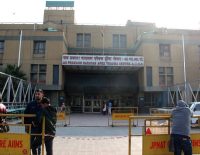1 in 6 households had family members experienced allergic reaction due to cosmetics: Survey

With lots of concerns reported about allergic reaction, an online platform LocalCircles has conducted a pan-India survey to understand issues faced by Indian consumers in the last 3 years with the cosmetics they purchased from physical stores or online. The purpose is to generate awareness amongst users about the issues faced by others, understand counterfeiting and also sensitise the regulator.
The survey received more than 37,000 responses from household consumers residing across 305 districts of India. Of these, 48% respondents were from tier 1 cities, 27% from tier 2 cities and towns and 25% respondents were from tier 3 and 4 town and rural districts. Gender wise, 61% respondents were men and 39% were women.
34% households had an incident where someone purchased cosmetics in the last 3 years that turned out to be fake or counterfeit
The first question in the survey asked respondents, “In the last 3 years, from where did you buy cosmetics that turned out to be fake or counterfeit?” In response, 7% said “company store”, 5% said “department store”, 5% said “beauty/cosmetics/general store”, another 5% said “local store/stall in the market”, and 12% said “online platform/app/ website”. 54% said they “had not purchased fake cosmetics in the last 3 years”, and 12% couldn’t say. On an aggregate basis, 34% of households had an incident where someone purchased cosmetics in the last 3 years that turned out to be fake or counterfeit. Of the 34%, 12% bought such cosmetics online while 22% bought them at a physical store or in the market. This question in the survey received 8,728 responses.
In India, the Drugs and Cosmetics Act, 1940, regulates the import, manufacture, distribution and sale of drugs and cosmetics. Industry experts argue that the present legislation is completely obsolete as it does not address issues related to online sales of medicines or cosmetics. As a result, there is rampant growth in the sale of illegal cosmetics.
On the basis of the recommendations of an 8-member panel headed by the Drug Control General of India to frame new laws for medicines, cosmetics and medical devices, the central government notified new cosmetic rules in 2020. The new rules mandate sharing all information about the manufacturer and the country where the product was manufactured, ingredients used, directions for safe use, among other details, to be placed in the label of cosmetics to enable consumers to make an informed choice. The government also decided to set up the first Central Cosmetic Laboratory and appoint inspectors across states.
As per the new rules, the expert panel will strive to keep up with changes in the pharmaceutical market, and monitor new retail avenues and regulatory demands that have emerged in recent years. Industry lobby says that the committee must have representatives from other stakeholders such as manufacturers, doctors, academia, scientists and consumers of patient bodies. Despite the forward movement by the government to regulate the cosmetics industry, very few instances of a crackdown on makers of spurious cosmetics have so far been reported.
The new rules clearly state ingredients that can or cannot be used in cosmetic products. Under the “Classification of Cosmetic Raw Materials and Adjuncts” issued by the Bureau of India Standards (BIS), the ingredients are classified into two categories: Generally Recognized As Safe (GRAS) and Generally Not Recognized As Safe (GNRAS). The GRAS class includes a list of dyes, colours and pigments allowed in cosmetics. The new BIS classification prohibits manufacture or import of cosmetics that contain dyes, colours and pigments that are not specified by it. In the case of other ingredients, the BIS usually considers them to be part of the GRAS class.
As per a report titled “The State of Counterfeiting in India 2021,” cosmetic products are among the most counterfeited products in India’s FMCG sector. These products contain lower quality or potentially harmful ingredients.
15% households have had allergic reaction or a severe ailmentfrom cosmetics they purchased in the last 3 years
The next question in the survey asked respondents about the issues they or their family members faced with cosmetics in the last 3 years. Around 10% pointed to “product quality issues”, and 3% had “(2) allergic reactions to some cosmetics”. 2% had “(1) product quality issues” and “(3) severe ailment due to use of some cosmetics”, another 2% said they faced both “1 & 2” issues, 5% had “2 & 3” issues, and 3% had all “1, 2 & 3” issues. Overall 56% said “have had no issues at all”, while 19% couldn’t say. On an aggregate basis, 25% of households have had issues with cosmetics they purchased in the last 3 years, of which 15% faced an allergic reaction or severe ailment.








Comments